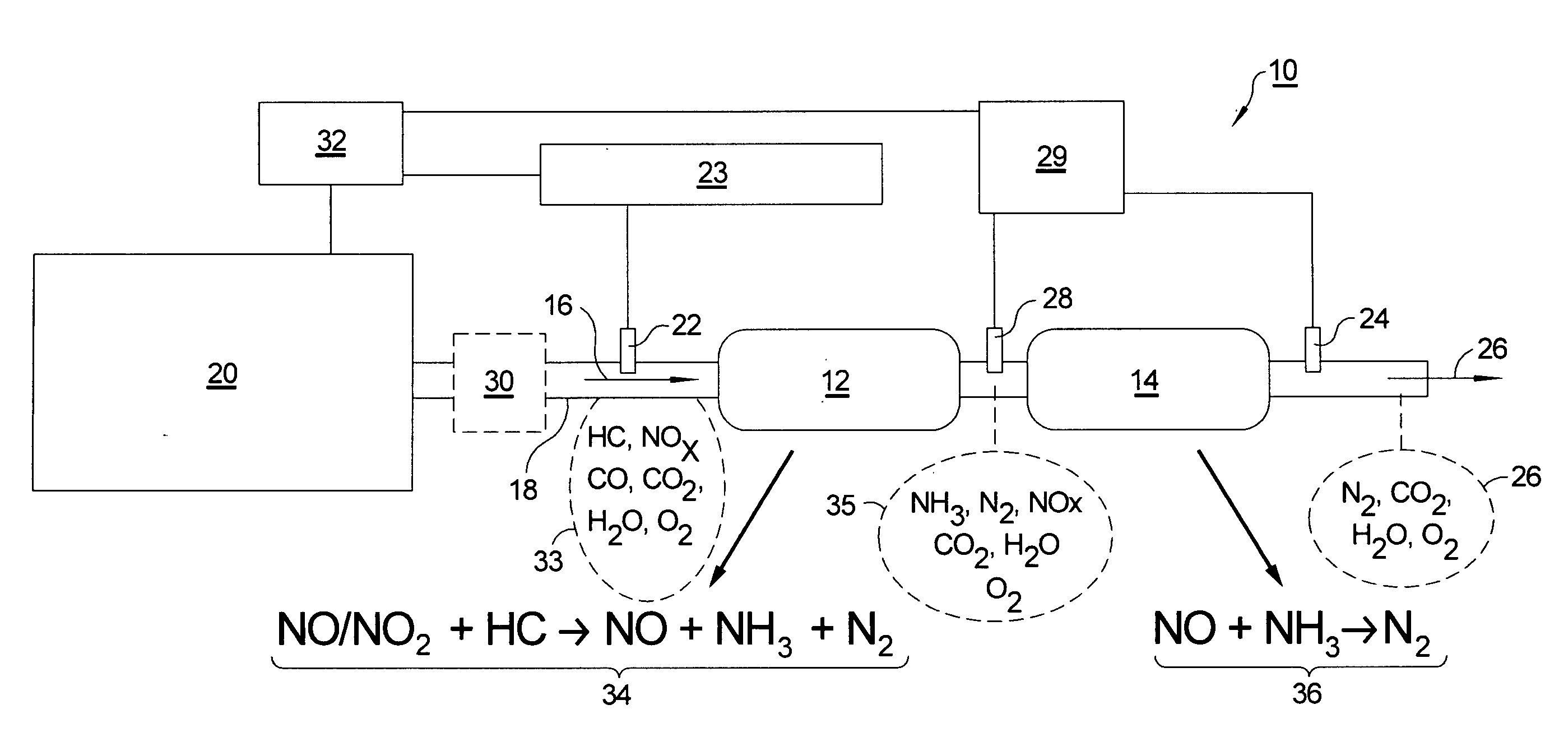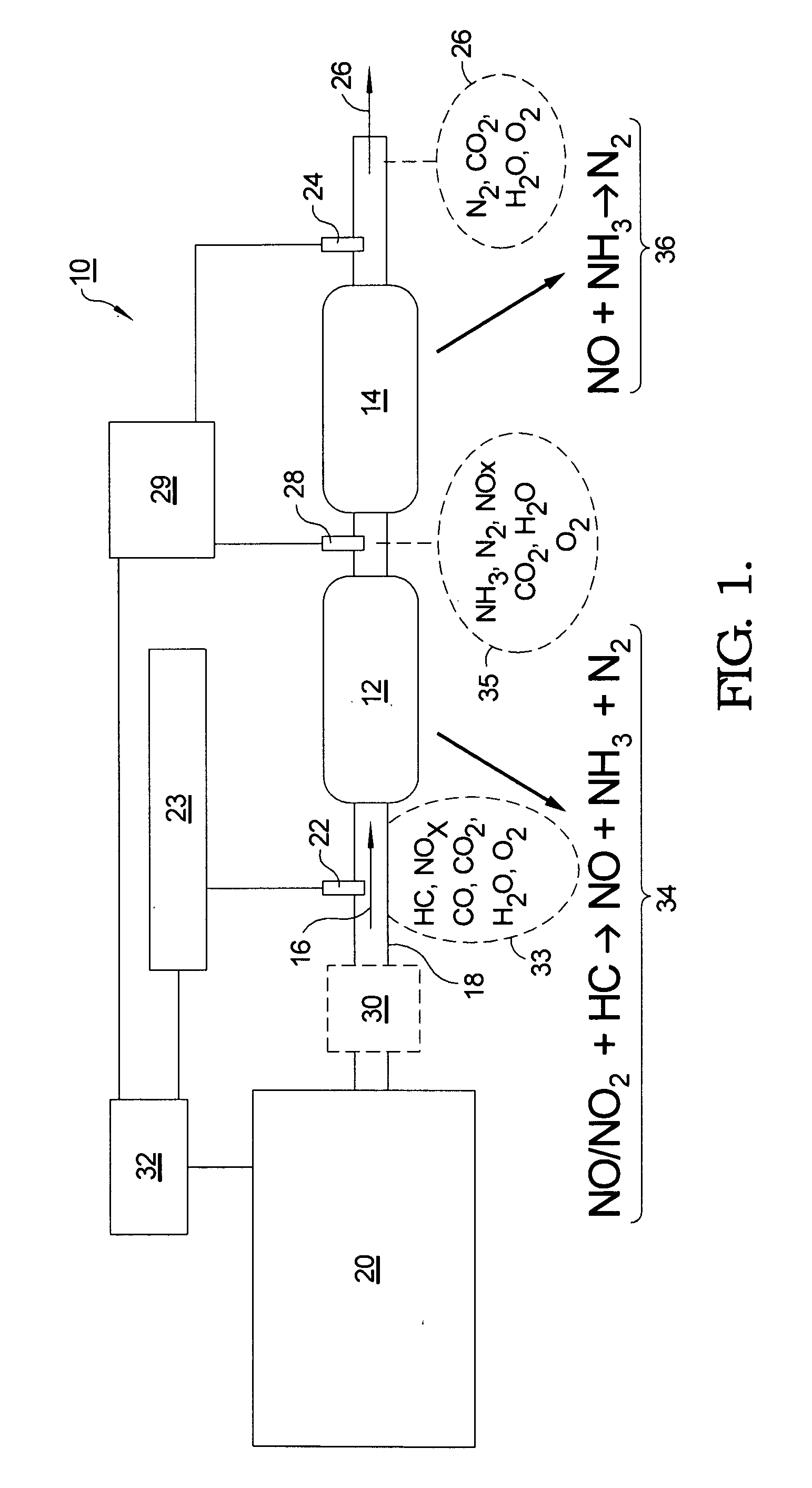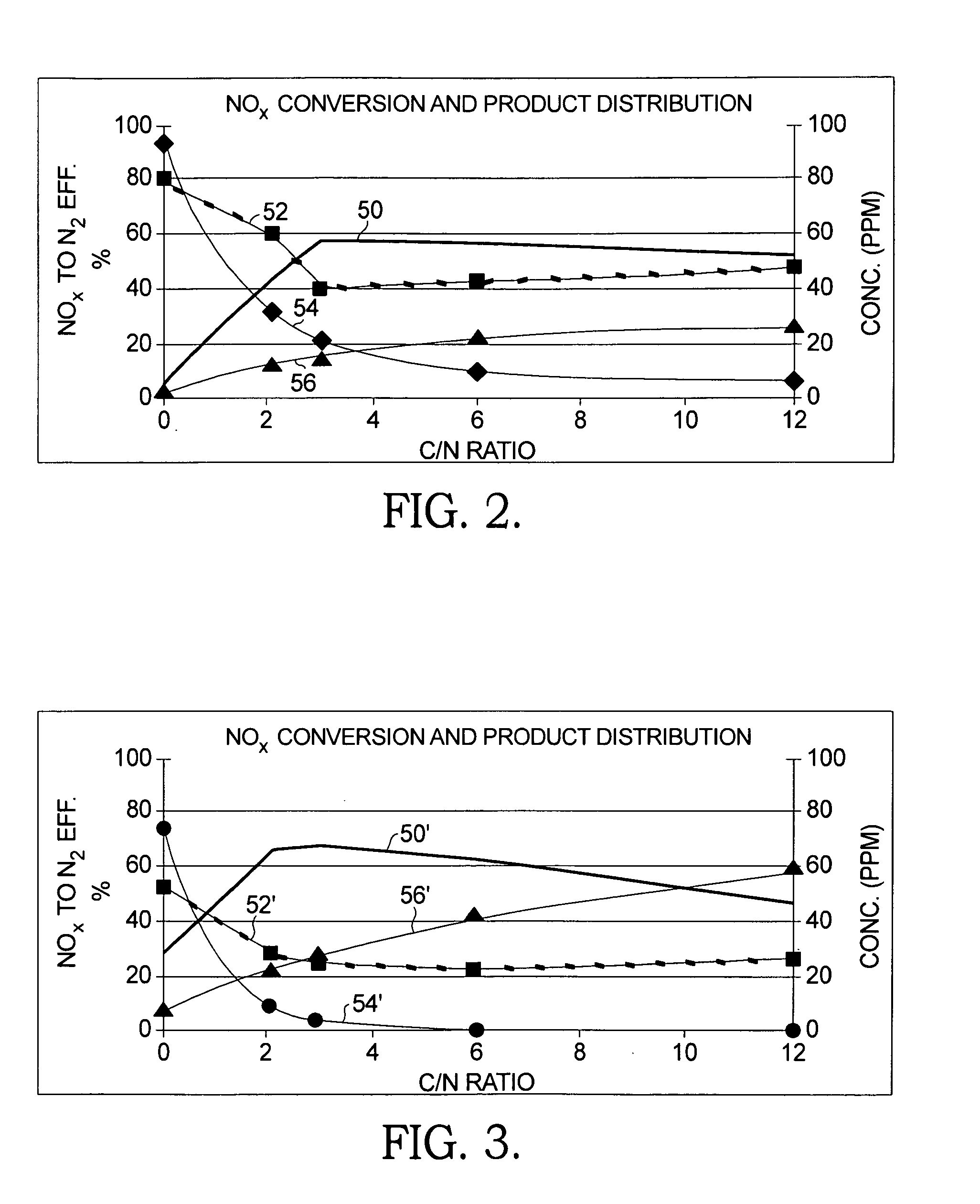Dual catalyst NOx reduction system for exhaust from lean burn internal combustion engines
a technology of internal combustion engine and nox reduction system, which is applied in the direction of machines/engines, separation processes, mechanical equipment, etc., can solve the problems of reduced nox emissions, limited commercial application of lean-operating engines, and reduced engine-out nox emissions, so as to eliminate about 95% of nox load
- Summary
- Abstract
- Description
- Claims
- Application Information
AI Technical Summary
Benefits of technology
Problems solved by technology
Method used
Image
Examples
Embodiment Construction
[0028]To meet the needs and competitive issues discussed above, an aftertreatment system in accordance with the present invention combines NOx species (NO and NO2), produced by combustion processes, with fuel HCs (e.g.,diesel fuel, gasoline, E85, or other fuels) and optionally H2 over a dual catalyst system to reduce NOx to nitrogen. (Diesel or “heavy” HCs as used herein means largely aliphatic hydrocarbons that are normally liquids at room temperature.) The source of the HCs can be from injection of reductants (e.g., fuel vapor) directly into the exhaust pathway, post injecting into the firing chamber in the combustion cycle which leaves larger HCs intact in the exhaust, or as the normal products of advanced premixed combustion modes. The object of the invention is to reduce tailpipe NOx levels to meet present and future emissions standards.
[0029]Referring to FIG. 1, a low cost dual-catalyst NOx reduction system 10 in accordance with the present invention comprises a first HC-NOx c...
PUM
| Property | Measurement | Unit |
|---|---|---|
| temperature | aaaaa | aaaaa |
| temperature | aaaaa | aaaaa |
| freezing point | aaaaa | aaaaa |
Abstract
Description
Claims
Application Information
 Login to View More
Login to View More - R&D
- Intellectual Property
- Life Sciences
- Materials
- Tech Scout
- Unparalleled Data Quality
- Higher Quality Content
- 60% Fewer Hallucinations
Browse by: Latest US Patents, China's latest patents, Technical Efficacy Thesaurus, Application Domain, Technology Topic, Popular Technical Reports.
© 2025 PatSnap. All rights reserved.Legal|Privacy policy|Modern Slavery Act Transparency Statement|Sitemap|About US| Contact US: help@patsnap.com



